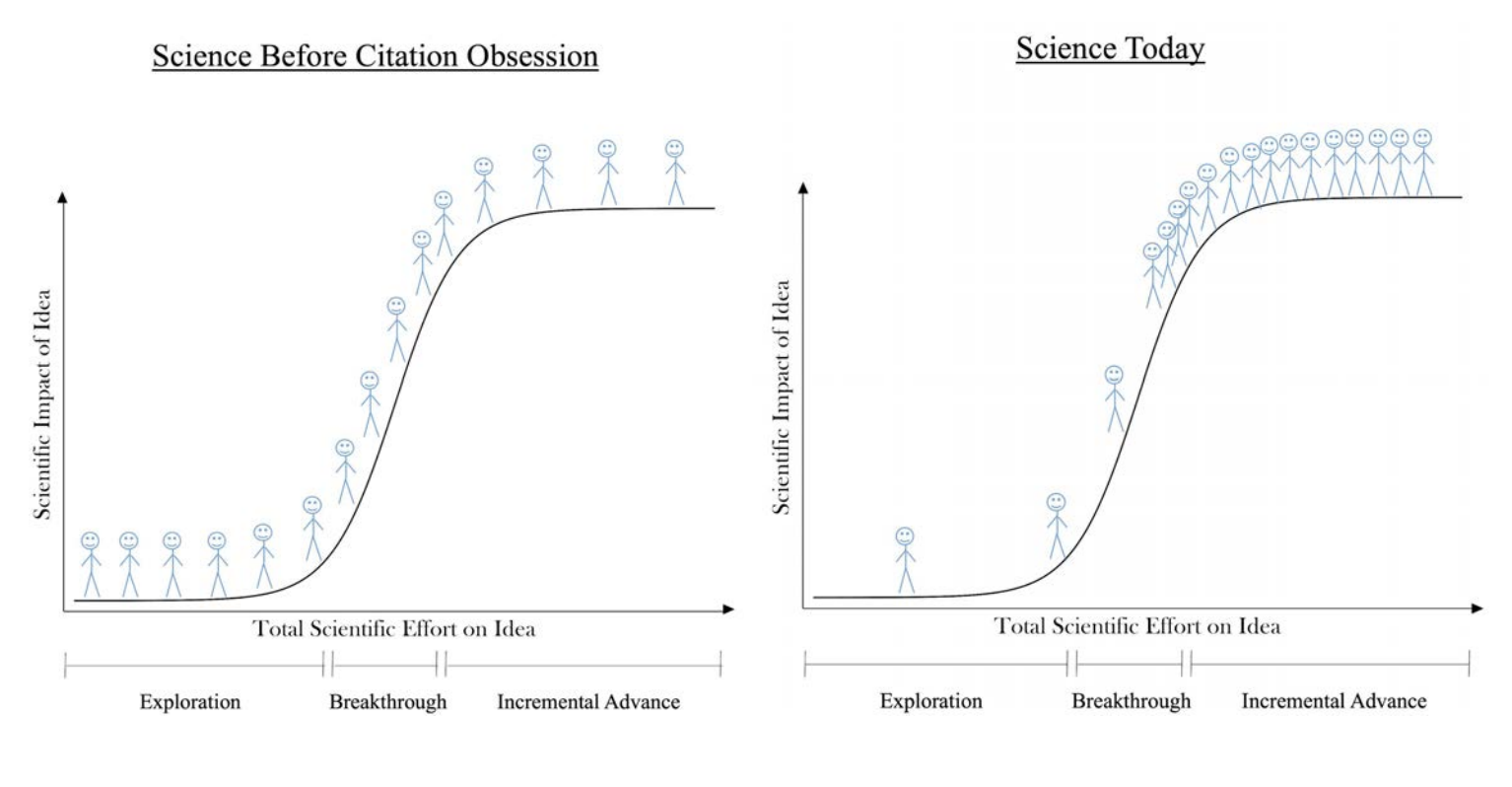Stagnation, scientific incentives, and funding models
by Jason Crawford · February 23, 2020 · 2 min read
A new paper by Jay Bhattacharya and Mikko Packalen, “Stagnation and Scientific Incentives”, argues that the focus on citations and impact factor has incentivized scientists to avoid early, exploratory work in novel areas, and instead work on more incremental advances in already-popular areas. However, since important breakthroughs usually depend on earlier, exploratory work that wasn’t obviously important at the time, this clustering of resources and attention in the later stages starves the world of the exploration needed for long-term scientific progress:

It’s an interesting theory, supported by a number of historical anecdotes. Worth reading. It would be good to see more empirical analysis to test this model of innovation and measure the magnitude of these effects.
A couple of thoughts:
First, the paper discusses scientist incentives, fundamentally how scientific productivity is measured and evaluated. This has implications for funding, prestige, and career advancement.
Are these “hygiene” factors or “motivation” factors? That is, are scientists actively motivated to follow these incentives? Or—what I consider at least equally likely—do scientists want to work on novel, exploratory work, but feel they can’t, because of the need to secure funding or advance their careers?
Second, can science learn anything from the business world? There is an analogy here: many breakthrough business ideas are not obviously important at the start; some even actively contradict core premises of established businesses.
These businesses happen through the mechanism of startups and VC. Silicon Valley culture has IMO essentially solved the triple problem of funding, prestige, and career:
- Funding: Small investments are available for early-stage ideas (angel, seed)
- Prestige: Failure is tolerated, conditional on smart strategy, good execution, and integrity
- Career: Failed founders can still easily get jobs at established companies
In fact, there is sort of a cycle wherein founders try a novel, potentially breakthrough idea for a few years, then if it doesn’t work out, they might spend the next few years working on an established idea at a larger company, before striking out again on another startup.
Re funding, one mechanism that makes this work is that early investors get a relatively large equity stake for their small investment (compared to later investors, who come along after the business is more proven). So an early-stage investor can make many small investments, have most of them completely fail, and one or two produce orders of magnitude returns, and their business model still works.
In other words, in contrast to the suggestion in the paper of rewarding novelty as such, the business world has come up with a more nuanced model that rewards long-term impact, but disproportionately rewards those who backed an idea early. (In business, novelty is rewarded as a side-effect: obviously good ideas are already being done by established players with lots of resources, and/or are subject to furious competition.)
The model of disproportionately rewarding early backers seems crucial to addressing the high-risk, high-reward nature of early ideas. It’s unclear to me if the science world has anything quite like this.
In any case, I think we need to not only look at the incentives facing scientists, but also those facing department heads, journals, and grant-making agencies. What do they get rewarded for?
